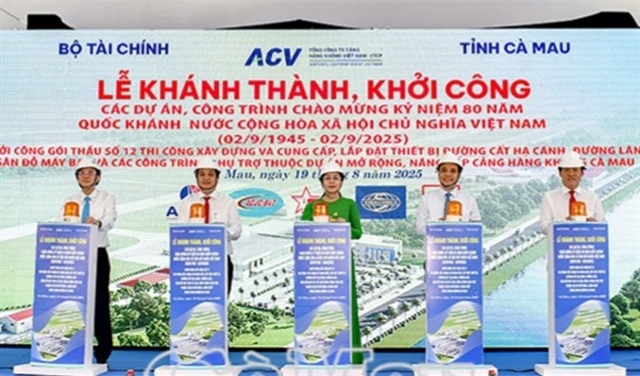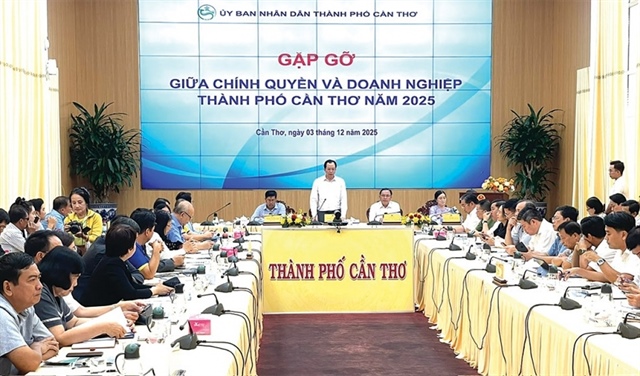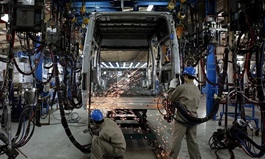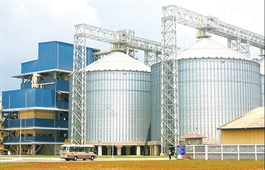Added trade potential for Vietnam with UK-EU deals
Added trade potential for Vietnam with UK-EU deals
The United Kingdom-Vietnam Free Trade Agreement (UKVFTA), which was inked in December last year and came into force on the last day of the year, is a seamless part of Vietnam’s great efforts to achieve economic integration and development. Despite the great overlap between the UKVFTA and the EU-Vietnam deal (EVFTA), there are some differences, not only in terms of the objectives of the European contracting party, but also – to a lesser extent – in terms of content.

Prof. Dr. Andreas Stoffers - Country director, Vietnam The Friedrich Naumann Foundation for Freedom
|
The United Kingdom is an important trading partner of Vietnam. In 2020, trade turnover between the two countries amounted to $6.6 billion. With $5.8 billion in exports, Vietnam’s trade balance was clearly positive, which also underlines the country’s strong interest in reaching an amicable agreement with the UK. In recent years, despite the uncertainties associated with Brexit, the growth of trade relations has been unbroken, averaging 12.1 per cent per annum in 2011-2019.
The trade relations between the EU and Vietnam are naturally greater given the fact that the EU is the world’s largest market. In 2019, the EU was the second-most important overseas market for Vietnamese products with a total trade volume of $56.45 billion, of which Vietnam’s exports accounted for two-thirds ($41.55 billion). This is 16 per cent of the country’s total export volume. In 2020, exports to the EU increased to $34.8 billion, and imports to $14.5 billion.
Vietnam benefits significantly more from bilateral economic relations than the EU. The continuous surplus Vietnam enjoys in its bilateral trade relations with the EU has been instrumental in offsetting Vietnam’s huge trade deficits with China and South Korea.
Vietnam exports mainly electronics, footwear, clothing and textiles, coffee, seafood, and furniture. The most important goods of EU exports to Vietnam are high-tech products including boilers, machinery and mechanical products, electrical machinery and equipment, pharmaceuticals, and a very limited number of motor vehicles. The EVFTA opens many opportunities for producers and traders on both sides, including small- and medium-sized enterprises.
The EVFTA is of course one of the most modern and far-reaching agreements of its kind. It plays an important role in promoting trade liberalisation between Vietnam and the EU.
Combined with the new Law on Investment which entered into force on January 1, and the other FTAs concluded by Vietnam, the Southeast Asian country has set an important course to improve its position as a trading partner and investment destination. From Vietnam’s perspective, the UKVFTA goes in the same direction.
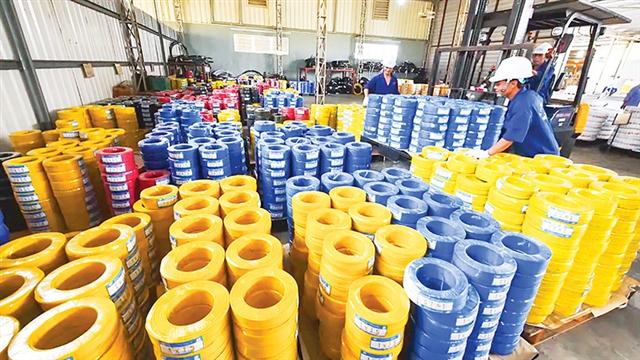
The UK, looking to strike deals in the aftermath of Brexit, used the EVFTA as a template for a Vietnam deal, photo Le Toan
|
Differences and similarities
“Recognising their longstanding and strong partnership based on common principles and values, and their important economic, trade and investment relationship”. This formula replaces the preamble of the EVFTA in the UKVFTA. If one reads both agreements in parallel, one notices the large overlaps, not only at the beginning, where only some words are replaced by others.
In fact, there are so many similarities between the two FTAs that it is fair to call the UKVFTA a clone of the EVFTA. However, there are some small but subtle differences.
In 14 sectors of the agreement, the UK allows Vietnam to export at zero tax with a certain quota: egg yolks and poultry, garlic, sweetcorn, milled rice, milled rice, tapioca starch, tuna, surimi, sugar and products high in sugar, mushrooms, ethanol, mannitol, sorbitol, Dextrin, and other modified starches.
In the area of banking services, Vietnam agreed to favourably allow UK credit institutions to increase their foreign holdings to 49 per cent of their charter capital in a Vietnamese joint stock commercial bank. Similar to the EVFTA framework, this commitment is only valid for five years (after that, Vietnam will not be bound by this commitment) and not applicable to the four joint stock commercial banks with a dominant government share, BIDV, VietinBank, Vietcombank, and Agribank.
In addition, the implementation of this commitment will be required to fully comply with regulations on procedures for mergers and acquisitions as well as safety and competition conditions, including the applicable shareholding limit. Vietnam allows the EU to raise 49 per cent in two banks while allowing the UK for the equal or even higher treatment of a bank (mostly HSBC and Standard Chartered) to raise their holding to the ceiling.
Within the EVFTA, one of the signing parties may grant subsidies when they are necessary to achieve a public policy objective. The parties acknowledge that certain subsidies have the potential to distort the proper functioning of markets and undermine the benefits of trade liberalisation. In principle, a party should not grant subsidies to enterprises providing goods or services if they negatively affect, or are likely to affect, competition and trade.
As far as the UKVFTA is concerned, the policy is less tolerant. “In principle, a party should not grant subsidies to enterprises providing goods or services if they significantly negatively affect or are likely to significantly negatively affect trade between the two parties.”
In several areas, the EVFTA is more specific than the UKVFTA. There are for instance some notes on fruit and vegetables in accordance with the Common Customs Tariff provided for in Commission Implementing Regulations and successor acts, laying down detailed rules.
Binding Vietnam into more specific rules is a wise strategy to make sure products are high quality and stops sub-standard products entering difficult UK markets.
Global Britain
Following the UK’s decision to leave the EU, the UK faces many challenges. A key one was how to manage trade relations with countries that had previously benefited from the EU’s trade agreements. As a huge trading bloc encompassing 27 European nations the EU is, in terms of trade policy, a power factor that can forcefully assert its interests.
Of course, a medium-sized single country like the UK does not have this power. Therefore, concessions have to be made that a giant like the EU does not have to make. However, the sheer size of the EU means that the individual and sometimes conflicting interests of the individual member states have to be taken into account. As a result, decision-making processes sometimes remain protracted, as can be seen in the decade-long negotiations on the EVFTA.
Accordingly, Great Britain has the advantage of being very agile. This means that FTAs can be launched much more quickly. This is especially true if no major concessions are expected on the part of the contracting partner. In addition, existing agreements - such as the very comprehensive and modern EVFTA - can be used as a model.
“Global Britain” is the British government’s leitmotif for its post-Brexit foreign policy. It was used by Theresa May in her first major speech as prime minister at her party’s conference. It signals that the country would not be inward-looking after Brexit, but on the contrary would have a global perspective that goes beyond Europe.
As stated in the joint agreement between the UK and Vietnam in last December, the UKVFTA is “also a key step towards the UK joining the Comprehensive and Progressive Agreement for Trans-Pacific Partnership”. Therefore, the UKVFTA is only one, but an essential building block of the post-Brexit UK’s liberal trade policy. Many more agreements will follow.
In order to reposition Vietnam after the COVID-19 crisis, both the EVFTA and the UKVFTA are an important element on the road to economic recovery. After the pandemic has started to shake the world’s economy, Vietnam has used the time well.
In addition to these two FTAs, there are many other steps to take, above all the new investment law, which helps Vietnam to emerge stronger from the crisis. Vietnam’s goal in repositioning its economy is not reaching a “V-shaped” curve of improvement, as so many other nations hope; rather, it lies in a “square-root recovery” where the pre-crisis level is not only to be reached, but clearly surpassed in order to continue growing at a higher level.
The efforts of the Southeast Asian nation will be crowned with success, and most analysts are bullish about Vietnam’s prospects. The EVFTA and the UKVFTA stand for the open and liberal politics of Vietnam, and they will make Vietnam – especially in conjunction with the new investment law and EU-Vietnam Investment Protection Agreement – more attractive for foreign investors.


